Kind of went down a weird pop culture rabbit hole the last few weeks.
Part of it was writing last week’s column and shooting the breeze with everyone about various Fugitive knockoffs. Part of it was that I’ve been reading some interesting histories about seventies comics — one was Barbarian Life, wherein Roy Thomas recounted his experience writing Conan the Barbarian for Marvel, and the other is Paul Levitz’s wonderfully exhaustive, giant-sized coffee-table book The Bronze Age of DC Comics.
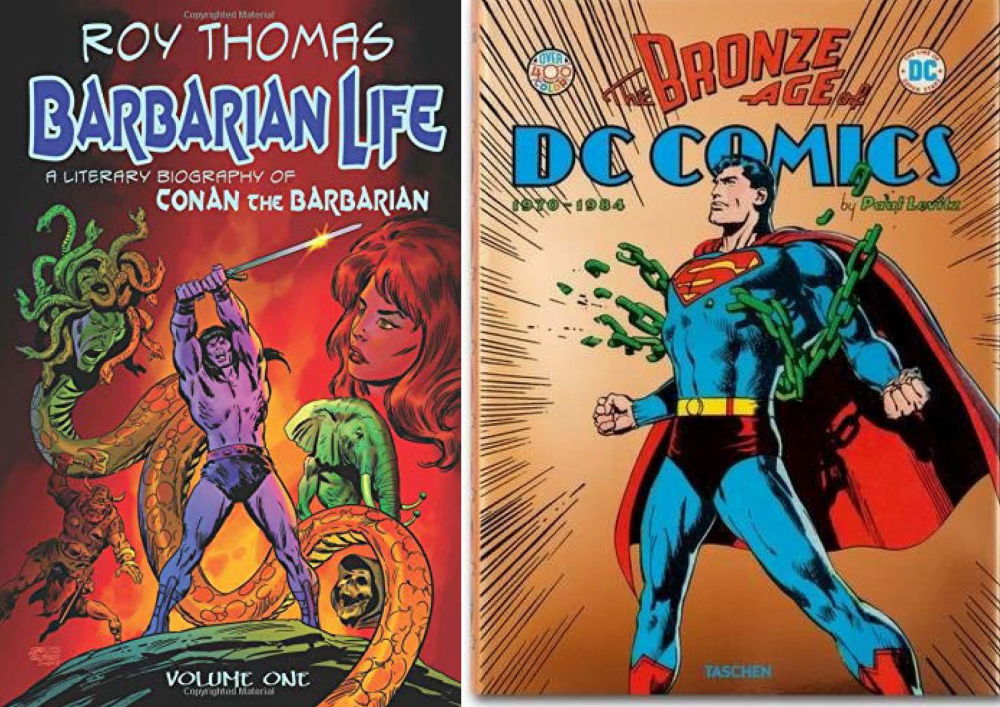
They’re both hugely entertaining books (in the case of the Levitz tome, you can take that literally; the thing is so enormous it ought to come with some kind of lap tray and a stand.)
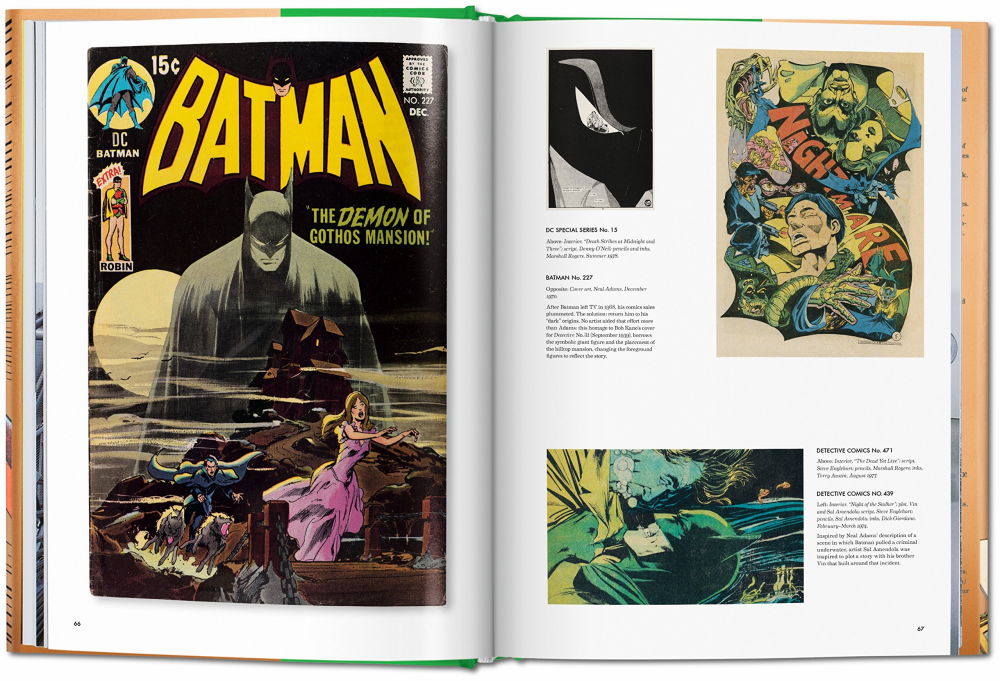
They’re entertaining especially to me, since I’m exactly the right age. I was devouring the products of that history — seventies comics, I mean — as the events recounted therein were happening. Now, reading the history of how these comics came to be, I had vivid flashbacks of when I was in junior high school, blowing all my lawn-mowing money on comics and paperbacks back when the Sentry Market near my home started to carry much more lurid (read: much more AWESOME!) material on their comics and paperback racks.
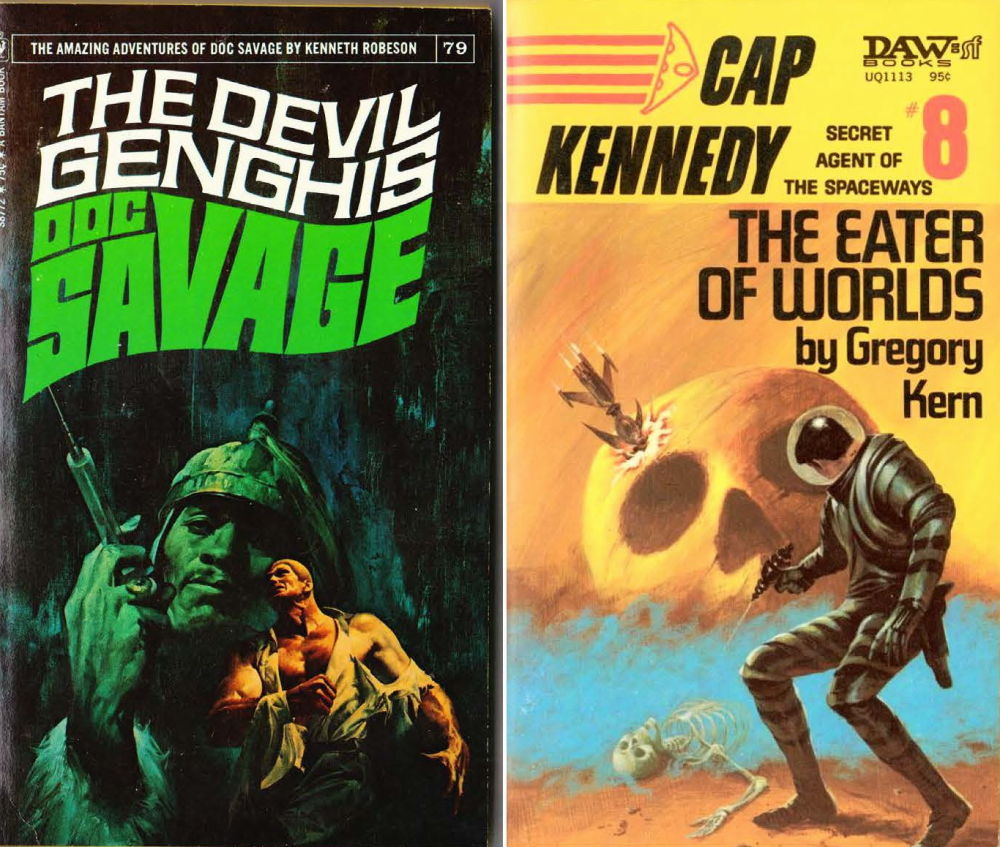
During the last couple of weeks while I was wallowing in these memories, a question came up in an online group of paperback sword-and-sorcery collectors I belong to. Mostly it’s just guys putting up pictures of cool books they’ve found. But this was a slightly deeper dive. A fellow wanted to know, What would have happened to Robert E. Howard if he had lived? Would he have kept going with the dark fantasy? Maybe he’d have done something like Game of Thrones.
Well, I know something about the history of the pulps, and I also know a little bit about Conan the barbarian, and just coming off my reading of Barbarian Life in particular my answer would be emphatically no. He wouldn’t have kept going.
See, the thing everyone forgets about Conan and Robert E. Howard is that the series wasn’t a hit when it came out.
Sure, it was Howard’s first big success, but ‘big’ is a relative term. Weird Tales itself was never a big seller, it was always on the margins of the pulp scene. The pay was low and often late, and the title was always on the verge of cancellation. (Same thing with Black Mask that gave us Hammett and Chandler and so many other classic detective and noir mystery writers; that one was never a hit either.)

The money in pulps was always more in westerns and romances. They dominated pulp magazine racks the way superheroes dominate comics racks today.

Later, in the fifties, when Gnome Press tried to publish Conan as a series of hardcover books, that didn’t go very well either.
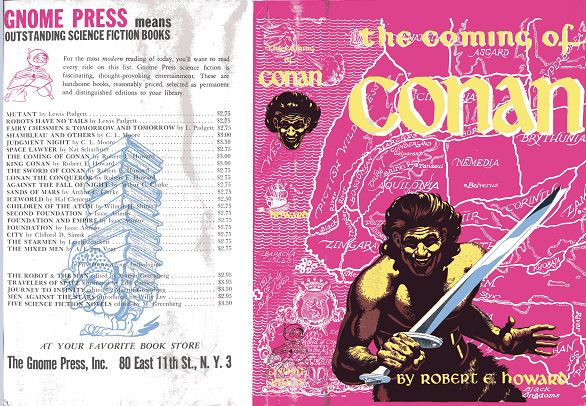
Mostly because, while Gnome Press had a fine editorial eye for the good stuff (take a look at that list of titles on the Conan back cover there) they had no gift at all for getting their books where people could see them and maybe buy one.
No, it was the paperback racks where Conan at last became a hit, in the late sixties, early seventies. Mostly because of the paintings of Frank Frazetta.

They caught Roy Thomas’s eye and he bought those books for the cover art. He didn’t know from Robert E. Howard. It wasn’t until the Marvel readers of the time wrote in asking for some kind of sword-and-sorcery title like the Lancer Conan books that the ball really started rolling.
Anyway, as I was recounting this history to my pals in the S&S group, I started thinking about all the other times that happened in the seventies, and how much fun it was to have all that crazy experimentation swirling around me in my little fannish introvert bookworm world.
Bear in mind, there was no internet. The jaded fan culture we have now, which seems to exist almost entirely on nitpicking and snark, was nowhere in evidence, except in the occasional mimeographed fanzine. For that matter, zine culture was still in its infancy… well, depending on where you start counting. Maybe in its adolescence. But fanzine circulation, even for the really famous ones like Jerry Bails’ Alter Ego, certainly was nowhere near the circulation of social media, or even blogs, today. Hell, the Trekkies were still figuring out how to get together at conventions without all the older SF fans treating them like annoying children.
The lines of communication from genre publishers to audience were very thin and narrow. Unless you lived in New York or Los Angeles, all you got to point you at new stuff were review columns in the digests that were the last gasp of the pulps, letter columns and house ads in the comics, and similar house ads in the back pages of paperbacks. That was it. So all you really had to go on were titles and covers.
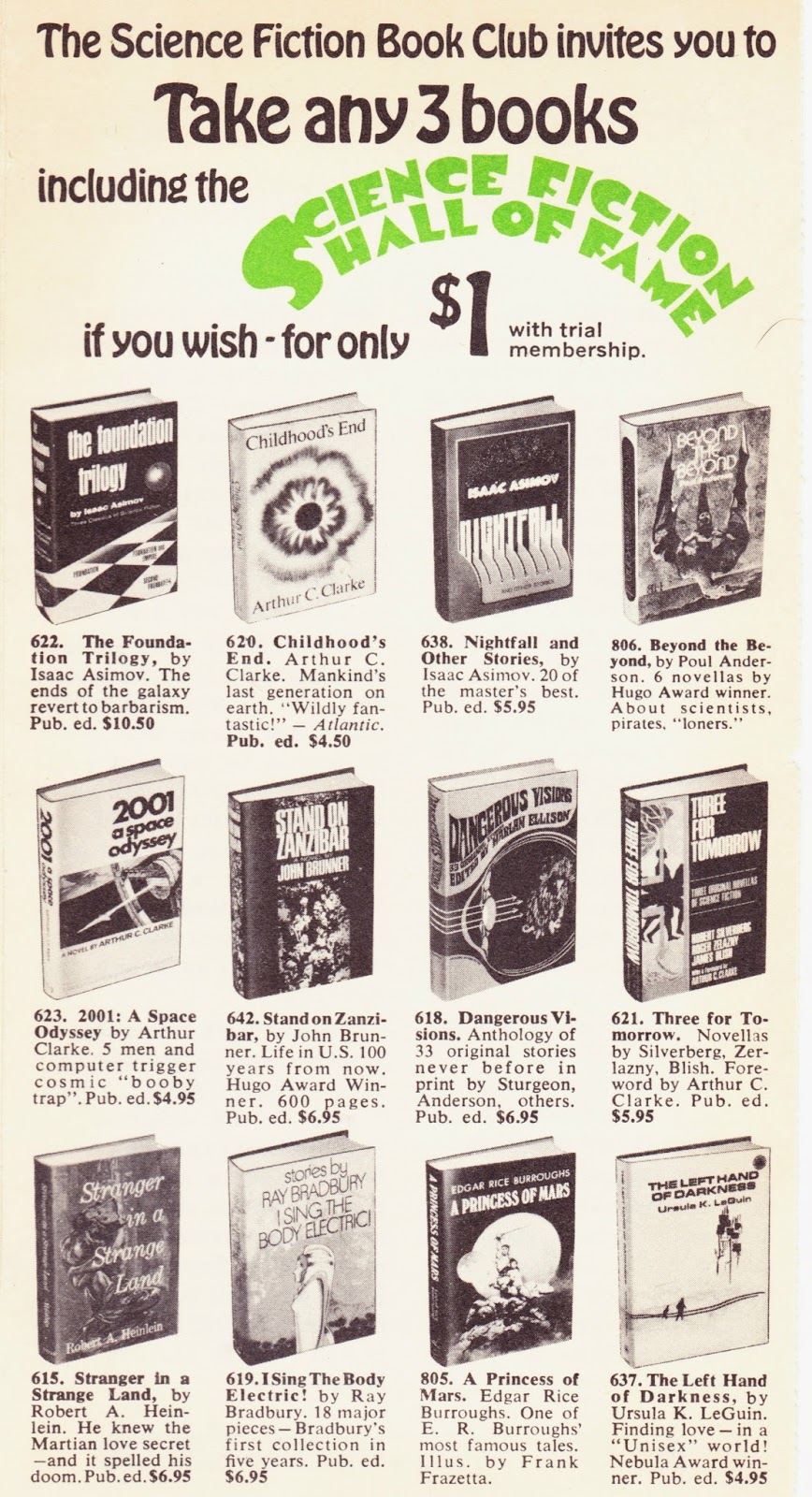
What none of us realized then was that the publishers of comics and paperbacks were pretty much in the same boat. They didn’t really have a bead on us out in the audience either, other than sales figures. So if something was selling in one format, maybe it might work in another. That was the Roy Thomas equation for bringing Conan to Marvel in the first place, but it was far from the only instance. Conan’s newfound success had its own ripple effect. Like they say in Hollywood, “No one wants to be first, but everybody wants to be second.”
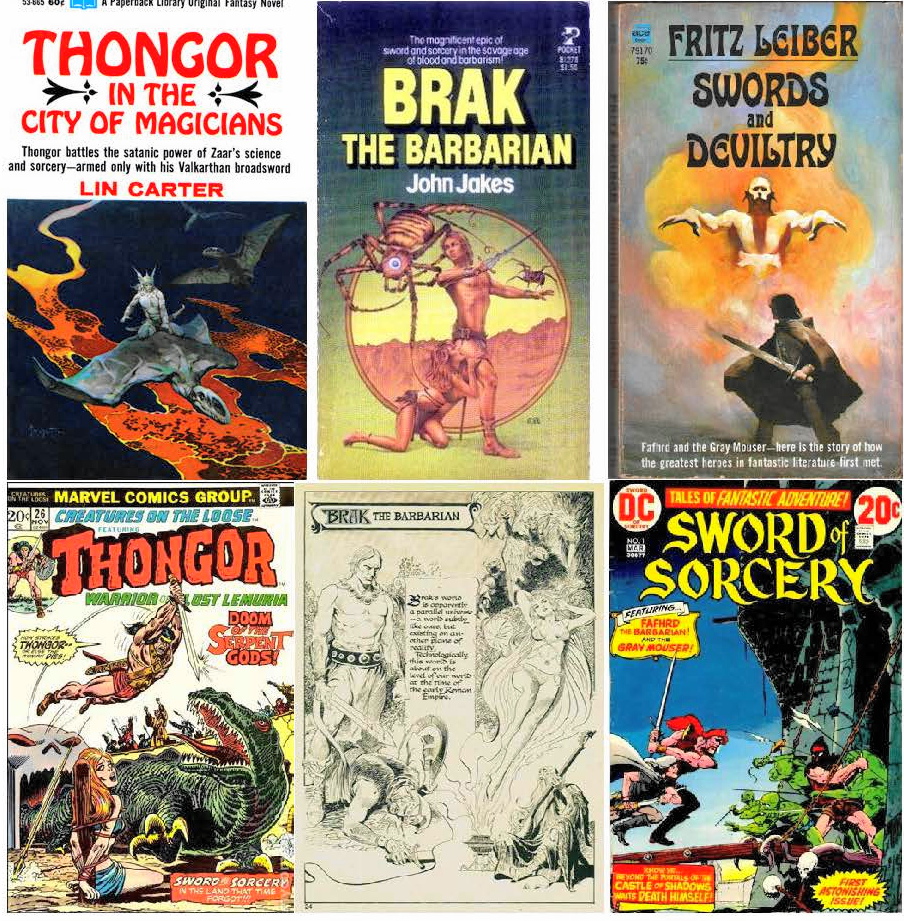
But the Conan success story is just one branch of a single tree in a whole sprawling pop-culture forest. Something would hit and suddenly there would be dozens upon dozens of thinly-disguised imitators. The Doc Savage paperback reprints were a big success, so of course publishers in both paperbacks and comics looked to the hero pulps for possibly the Next Big Thing.

But this was by no means confined to superheroes, or even adventure fiction. There was a time when Gothic suspense was a thing. Dark Shadows was a hit, Gothic paperbacks were moving pretty well, why not try it in the comics? That’s how you got DC Comics doing Dark Mansion of Forbidden Love.

Of course Mack Bolan, the Executioner, practically created a genre all his own.

The Executioner was so huge that not only did he spawn a horde of imitators (The Liquidator, Hardman, The Penetrator, Kill Squad, and so on) but other paperback and pulp series got makeovers to make them more Bolan-like.
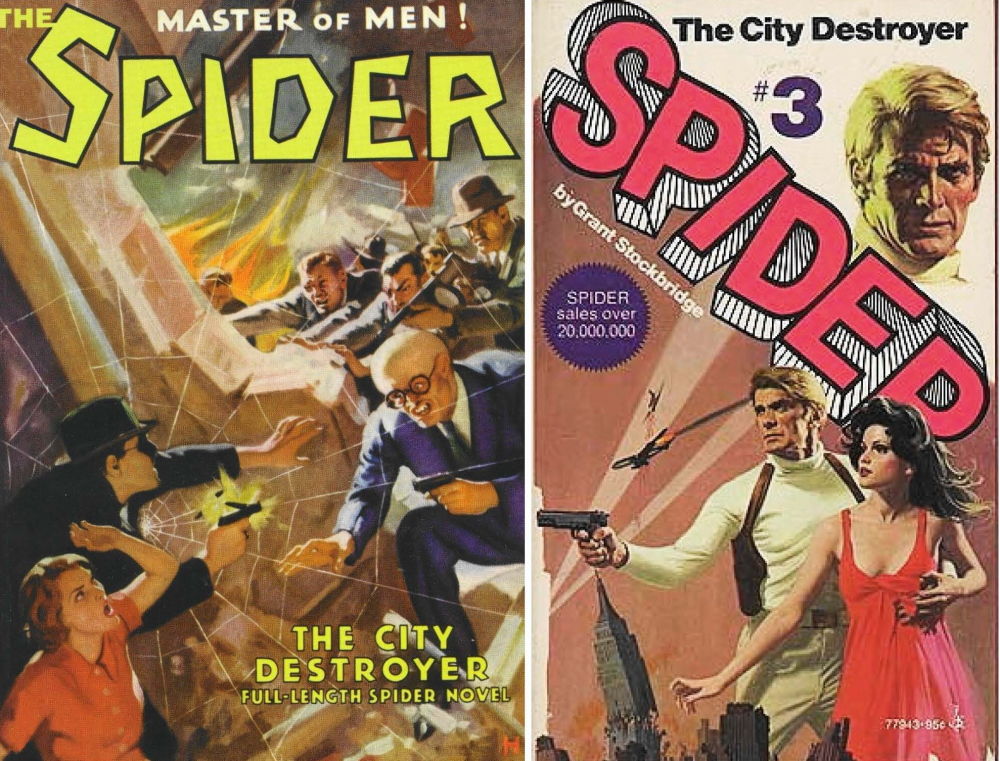
Tolkien’s Lord of the Rings was huge too, and everyone was trying to get a piece of THAT action.

Of course TV and movies also provided lots of source material, and in the days before home video, this was often the only way we had to enjoy these stories on-demand. Sometimes there would even be new, original stories you could only get in book or comics form.

Rosemary’s Baby and The Exorcist were huge in theaters when they came out, and there were a number of demon-fighting occult series trying to coat-tail on that success.

Bruce Lee was huge in the early seventies too, and naturally comics and paperbacks also went to that well quite a few times.

It wasn’t all one-way, by any means. Paperback houses were raiding the comics almost as eagerly as comics publishers were looking for paperback original series ideas to adapt.
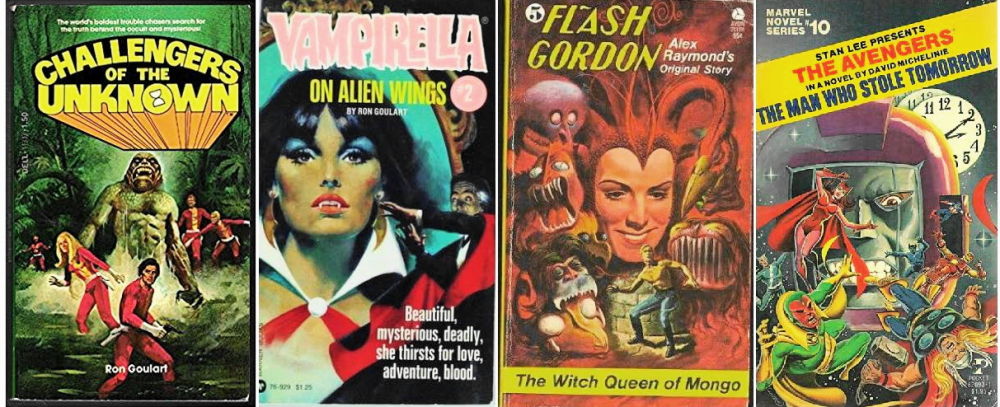
And sometimes, in the desperation to find something genre audiences would latch on to, things just got frigging weird.

Vigilante mermen, Bond-style exorcists, post-nuclear-war Greek Gods, whatever. I was on board for ALL of it. Most of the things I enjoy to this day come from that time, biking up to the grocery store to see what new gonzo wonders those spinner racks could offer me.
Often it didn’t last. Publishers were throwing everything at the wall and very little of it stuck. Despite the success of Doc Savage, somehow nobody could make any other reprint series go the distance, not even the Shadow. The Avenger, not really a pulp success back in the day, nevertheless outlasted the Shadow and when Warner Books ran out of pulps to reprint, they enlisted Ron Goulart to write some new ones.
But that was very rare. Original paperback series rarely went beyond ten volumes– Richard Dragon only got one and when DC adapted him for comics that series only went for a year and a half or so.
Was any of it any good? I think so. Once in a while creators would luck into something that had real legs, like Brak the Barbarian’s John Jakes getting commissioned to do a series of tie-in historical adventures for the Bicentennial that took him into suddenly respectable territory.

Today he’s regarded as one of our finest historical novelists– rightfully so!– but I am always going to have a soft spot for stuff like Brak and the Sorceress.
Those days are long gone now. Paperbacks and comics are no longer disposable. Putting something in actual print is a lot more expensive now and publishers are much less willing to take a chance; even ‘mid-list’ books, and never mind the kind of junk paperbacks we’re talking about here, have mostly disappeared. Even more than network television used to be, paperback and comics publishers are not inclined to try anything new or even to try to spin off a title out of some genre niche success. Once in a great while there is something that echoes those days– John Wick strikes me as a very seventies sort of concept for a series– but mostly people are looking for something safe, something that will make a “tentpole franchise.”
Even more discouraging than that, the internet has created such a climate of instantaneous communication that stories get accidentally spoiled even when you aren’t trying to find out what’s coming, and fans are never shy about passing harsh judgement far in advance of actually seeing the thing in question. There are no real surprises left. It is a very rare experience for me, today, to see something new and take a chance just based on cover art or a jacket blurb, without knowing anything else. It’s not that I wouldn’t; it’s that I almost never get the opportunity, any more.
There was a wonderful sort of fierce joy that came with unexpectedly finding something new and cool. Like the Weird Heroes series from Byron Preiss, or how much better William Nolan’s novels about Logan the Sandman were than the Logan’s Run movie.

Don’t get me wrong. I love the convenience of being able to look things up on the net and order online. I admit it.
But it’s not the same.
*
That was the rabbit trail.
But I imagine some of you might be wondering about the original question. If Robert E. Howard had lived, would he have leveraged Conan and Kull and Solomon Kane into genuine literary success? Would he have become an elder statesman of SF and fantasy like George R.R. Martin or Terry Brooks or someone like that?
Honestly? I think it’s unlikely.
I think he’d have transitioned into historical fiction, same basic trajectory as John Jakes. Remember, back in the day, the fantasy stuff wasn’t really a success for Howard. He did much better with Breckenridge Elkins and Sailor Steve Costigan than he did with Conan and Kull.

A lot of the in-the-tradition-of-CONAN! books saturating the paperback racks in the seventies, remember, were incomplete or unpublished Howard manuscripts, assembled and sometimes completed by other hands than Howard’s own.

Apart from all that, though, if you read the stuff closely, I think Robert E. Howard’s passion wasn’t fantasy, but history. He loved the tales of empire, of political intrigues, of great nations embarking on crusades. I think he put more into El Borak and Dark Agnes than he did into Conan.
Also, he loved to bring the funny. His work on A Gent From Bear Creek and the Sailor Steve Costigan stuff is slyly hilarious. I daresay if Howard had lived, and maybe somehow learned to manage his bipolar disorder, he’d have landed somewhere between John Jakes and Louis L’Amour. That’s my guess.
Back next week with something cool.
*
Housekeeping note– if you should happen to click on one of the Amazon links above and you end up purchasing an item– ANY item, not necessarily the one at the link — the Junk Shop gets a referral fee. If you feel a shopping spree coming on, please consider using our gateway. It helps to defray the costs around here and then we don’t have to put up annoying ads. Thanks.


I suspect Howard would have eventually veered primarily toward writing westerns, had he lived. That said, the occasional Conan story might have still popped over the years, had the opportunity to make some cash from them presented itself. And if the Conan stories had started to become popular in the late 60’s and early 70’s in this alternate reality, I’m sure he would have gladly taken a stab at working on new material for the character.
From what little I know of Howard, I think you’re right about his probable literary trajectory had he lived. Just looking at his complete bibliography of stories, it’s easy to see that most of them weren’t, in fact, sword & sorcery or horror, but rather general adventure stories, either in modern or historical settings (including Westerns), and quite a bit of humor and even some detective stories. Even “Shadow of the Vulture” the story that introduced Red Sonya (*not* a spelling error) is a historical adventure set in 16th century Europe, not the Hyborian Age.
On Jakes, I always think of him first as a writer of historical fiction, because when I was a little kid in the mid-1970s, his various American history novels were ubiquitous in the paperback spinner racks. I remember being a little surprised later, in my teens, when I saw one of his Brak novels on the same shelf of a bookstore as some Conan books, and, not realizing it was a reprint, thinking, ‘So he’s writing sword & sorcery stuff now? Weird.’
Otherwise, I’m with you on the discovery of new stuff just based on cover art. A personal example that immediately comes to mind is the first Daw edition of Imaro – the cover art and blurb were enough to get me to buy it, and now I’ll read anything Charles Saunders writes.
I first encountered Imaro in Andrew Offutt’s Swords against Darkness anthologies. Then I found the paperbacks. Saunders is indeed excellent.
I’m playing around with a column idea about books that sold to me JUST on the cover. Weird Heroes Volume Six was one of them; that and recognizing a couple of the names of the contributors, but Preiss knew to PUT them on the cover, so I think that counts.
“What would have happened to Robert E. Howard if he had lived?”
Assuming he wrote anything at all, he would have been a western writer, as by 1936 he was almost exclusively writing that genre, as Weird Tales was almost 2 years behind paying him and the Conan stuff wasn’t taking him anywhere.
Personally I think that the end of his relationship with Novalyne Price doomed him to suicide and that it was inevitable.
Agreeing on Howard. His own musing on his career were that his future lay in Texas regional history stories — Beyond the Black River comes pretty close, except it’s a Conan adventure.
I’ve always thought it was a shame his Dark Agnes stories didn’t sell — she was an impressively formidable hero, but there you are. Of course it shows the vagaries of fame that when Howard and Lovecraft were publishing in Weird Tales, their #1 author was Seabury Quinn.
John Jakes will be remembered for North and South, if nothing else (I like the Bicentennial books but my wife, who loves North and South, thought they were awful). Brak mostly demonstrates how good REH was at his peak: Howard fleshed out his setting and his characters motivations in a way Jakes never did. Though I do enjoy Jakes’ much more obscure fantasy The Last Magician.
In general agreement about the 1970s, though who knows? Kids who are the same age now may get the same buzz out of browsing indie e-books.
I wonder if the Avenger lasted because of the Kenneth Robeson name on the books? Even though it wasn’t written by Dent.
The initial Hercules Unbound six issue arc was awesome; after that it lost some of its focus. Though I think Kamandi provided at least as much weirdness, like the gorilla cult that worshipped the Watergate tapes (“Arm our investigators with subpoenas! Send them forth to summon witnesses to be …. interrogated!”).
I have to disagree on one point: The novel of Logan’s Run is not better than the movie (I think the same applies to Planet of the Apes). I really like the movie for some reason but the novel just doesn’t do it for me. I never bothered to read the follow-up novels.
I always point to Logan’s Run and Planet of the Apes to counter when people say “the book is always better than the movie”
Depends on what you’re looking for. The original Logan novel is a reaction to the rise of youth culture in the 60s, over-population, Vietnam, etc, etc. People only live to 21 and live hedonistic lifestyles, until Lastday. Logan’s motivation for finding Sanctuary is different, and he runs across the country, not a city and its surrounding environs. The film is a different animal, with more manipulation involved, reflecting Watergate and the idea of a police state, as well as youth culture; However, owing to the older actors, the age is bumped to 30, for the lifespan, which doesn’t have the same effect. The hedonistic lifestyle is there, in the film; but, is more background, by comparison.
The other Logan novels expand things. Logan’s World finds him back in his own world, forced to go into places he had been, which have fallen apart. Logan’s Search has him thrust back into a situation, which more reflects the movie than the first novel. Both are good reads and there used to be a really nice omnibus edition of all three.
I’ll do you one better: much as I like the movie in all of its 1970s glory, I like the comic book adaptation, by Kraft, Perez and Janson, even more. They stayed faithful to the movie’s story while still making the comic look like its own thing.
Haven’t read any of the books, though – yet. The omnibus edition that Jeff mentioned is always listed for insanely high prices online ($200-$300) when you find any copies available.
I think the comic book might have actually been my introduction to Logan’s Run. When I was a kid in the 80s someone my mom worked with moved and gave me a ton of Marvel and Warren comics from the 70s and a fairly complete series of Logan’s Run was in there.
The Lancer Conans actually put me off the Cimmerian for years. There was so much more material by DeCamp, Carter and others and most of it was, at best, unremarkable. It wasn’t until I read some all-Howard collections years later that I could appreciate Conan
I first encountered Jakes as the author of the Kent Family Chronicles, when they adapted them for tv. Never read Brak; but, I did read and re-read his collaboration with Gil Kane, Excalibur, which came out when the John Boorman movie did, though it has no relation, other than being a version of the King Arthur legends. I used a cut out of the movie add, from the local paper, as a bookmark, for years, before both it and the book fell apart.